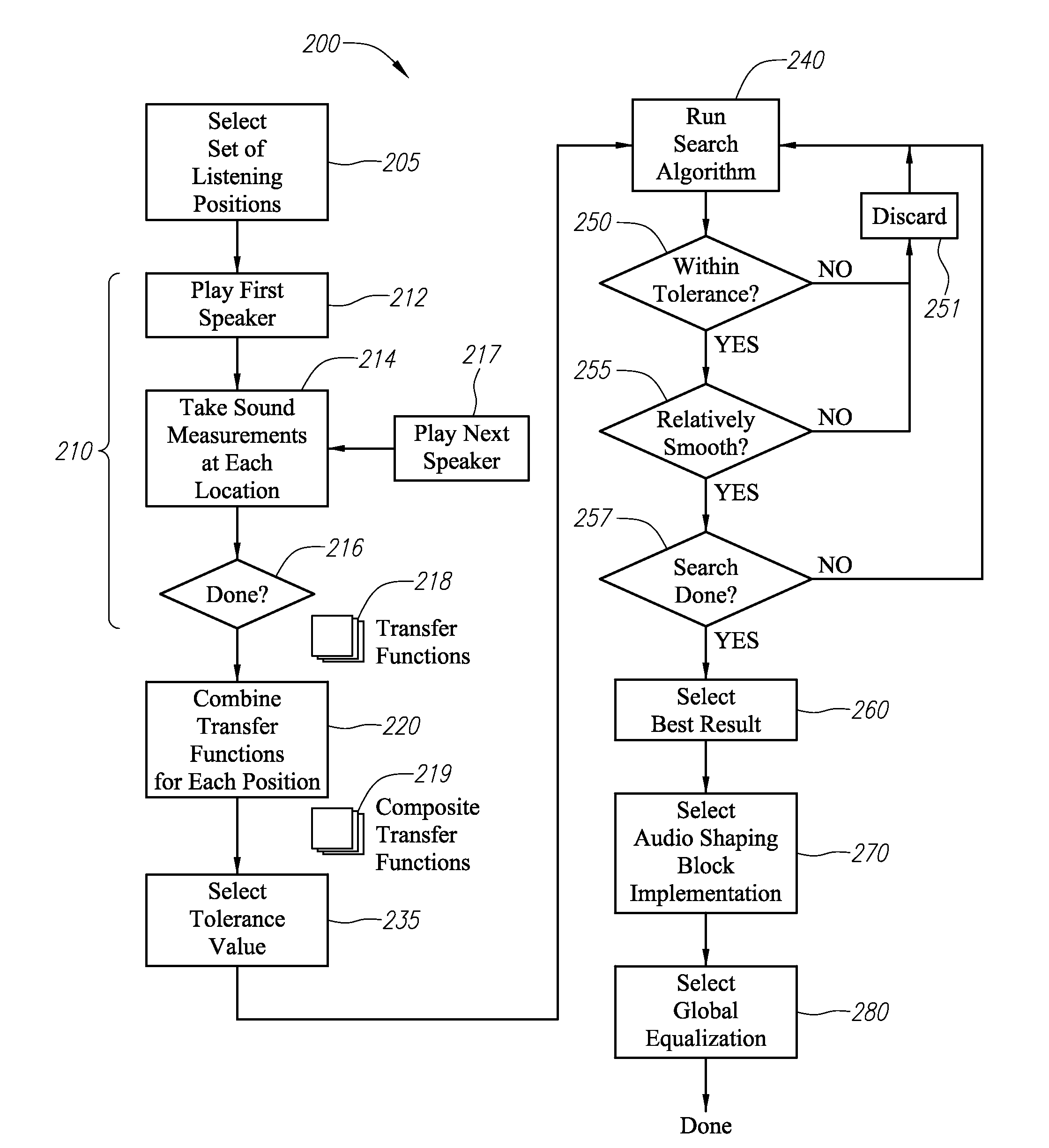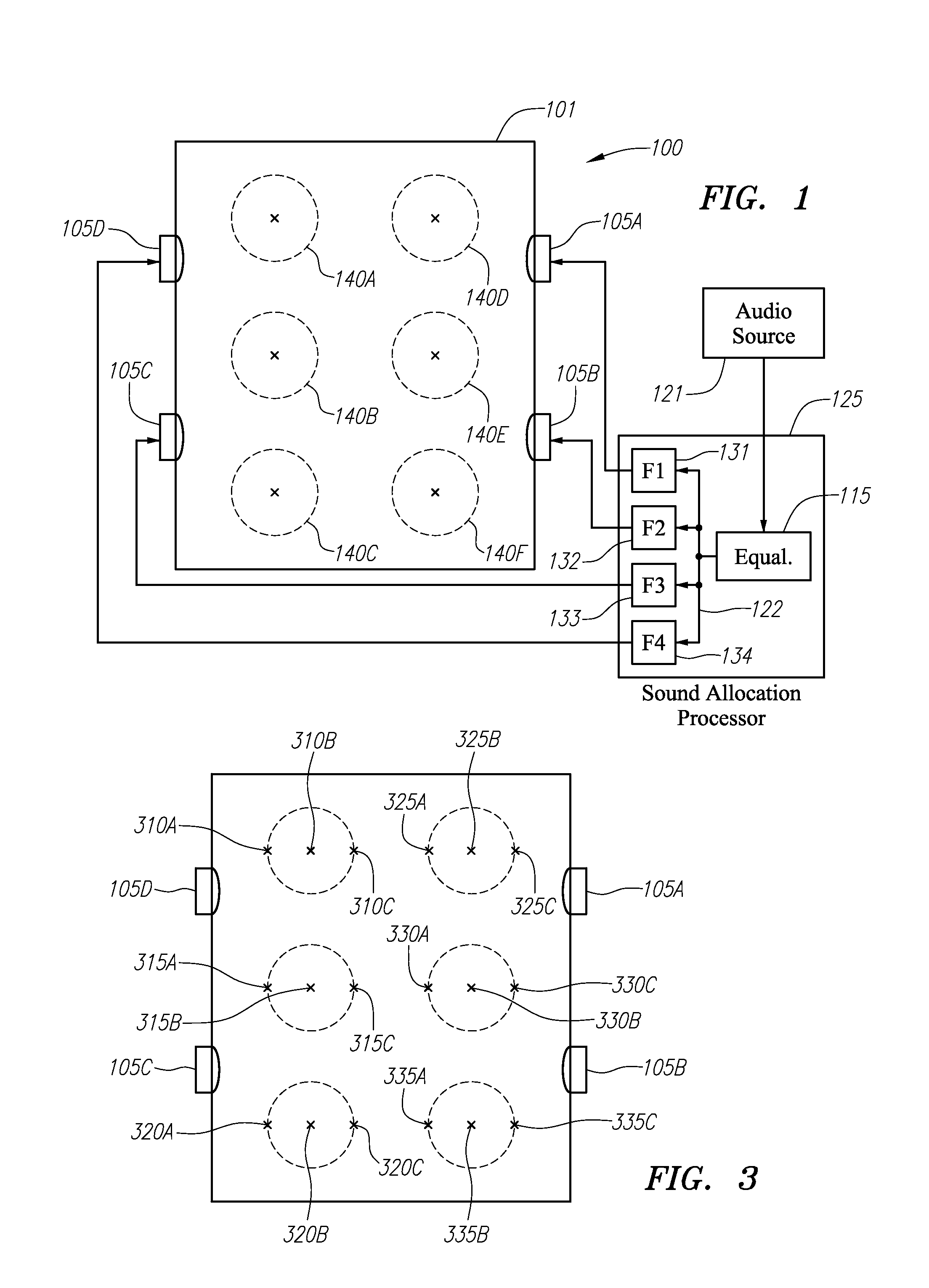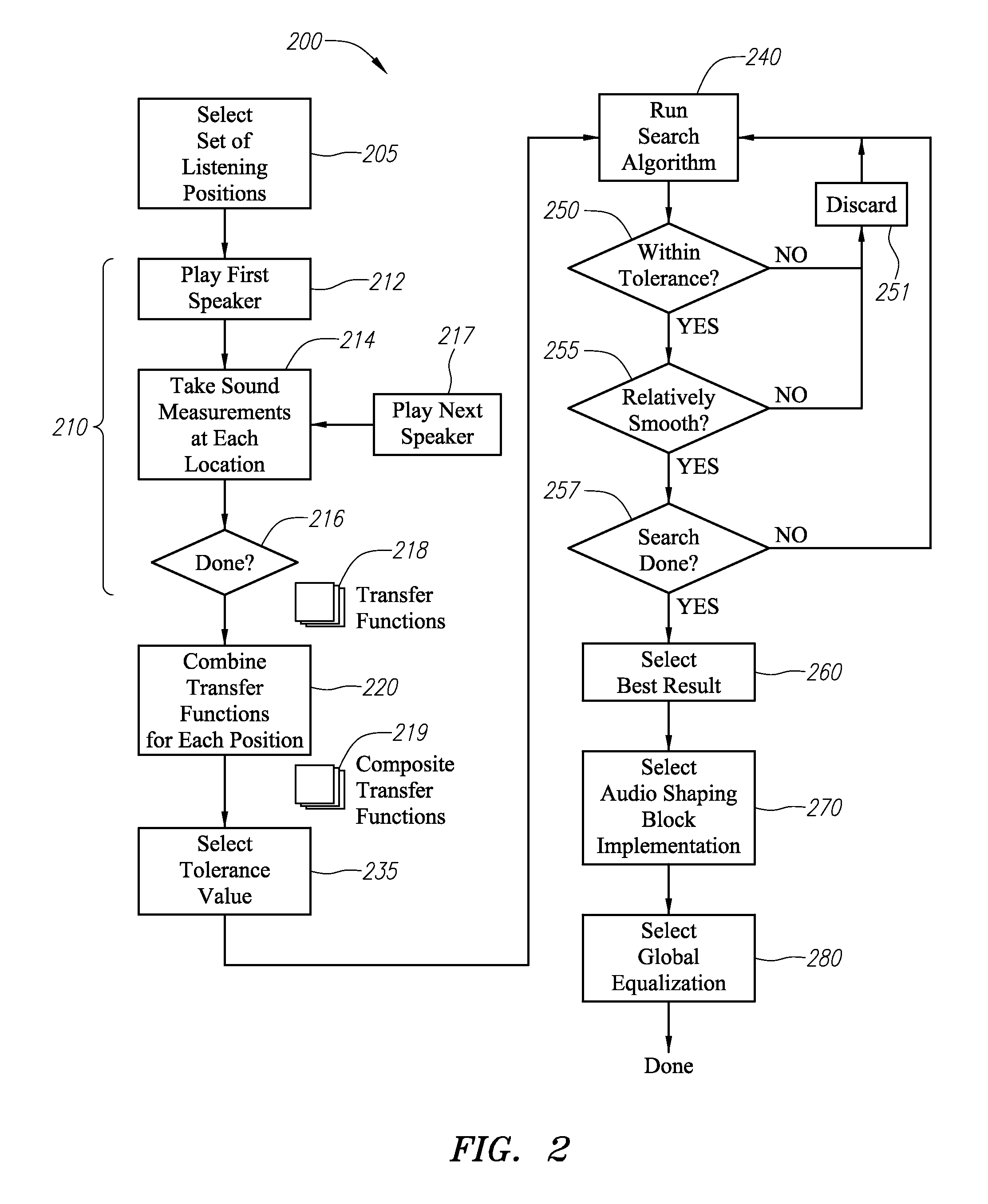Method and system for modifying a sound field at specified positions within a given listening space
a technology of sound field and listening space, applied in the field of sound reproduction systems, can solve problems such as affecting sound quality, constructive or destructive interference, audio system components, etc., and achieve the effects of reducing frequency response or audio level variance, maximum output capability, and maximum power outpu
- Summary
- Abstract
- Description
- Claims
- Application Information
AI Technical Summary
Benefits of technology
Problems solved by technology
Method used
Image
Examples
Embodiment Construction
[0028]According to one or more aspects of embodiments disclosed herein, an audio system is provided having a plurality of acoustic output sources disposed in or around a listening area, with a sound allocation processor receiving an audio source signal. The sound allocation processor may include a plurality of audio modifying elements, one for each acoustic output source, modifying certain characteristics (e.g., a gain and / or a phase) of the audio source signal with respect to frequency for each acoustic output source to, for example, create a uniform sound level over the listening area or within defined zones within the listening area. The sound allocation processor may, in certain circumstances, be configured to maximize or optimize the output capability the acoustic output sources whilst at the same time minimizing the inter-seat response variability and the in-band response uniformity, within a selected tolerance.
[0029]In various embodiments, each of the audio modifying elements...
PUM
 Login to View More
Login to View More Abstract
Description
Claims
Application Information
 Login to View More
Login to View More - R&D
- Intellectual Property
- Life Sciences
- Materials
- Tech Scout
- Unparalleled Data Quality
- Higher Quality Content
- 60% Fewer Hallucinations
Browse by: Latest US Patents, China's latest patents, Technical Efficacy Thesaurus, Application Domain, Technology Topic, Popular Technical Reports.
© 2025 PatSnap. All rights reserved.Legal|Privacy policy|Modern Slavery Act Transparency Statement|Sitemap|About US| Contact US: help@patsnap.com



